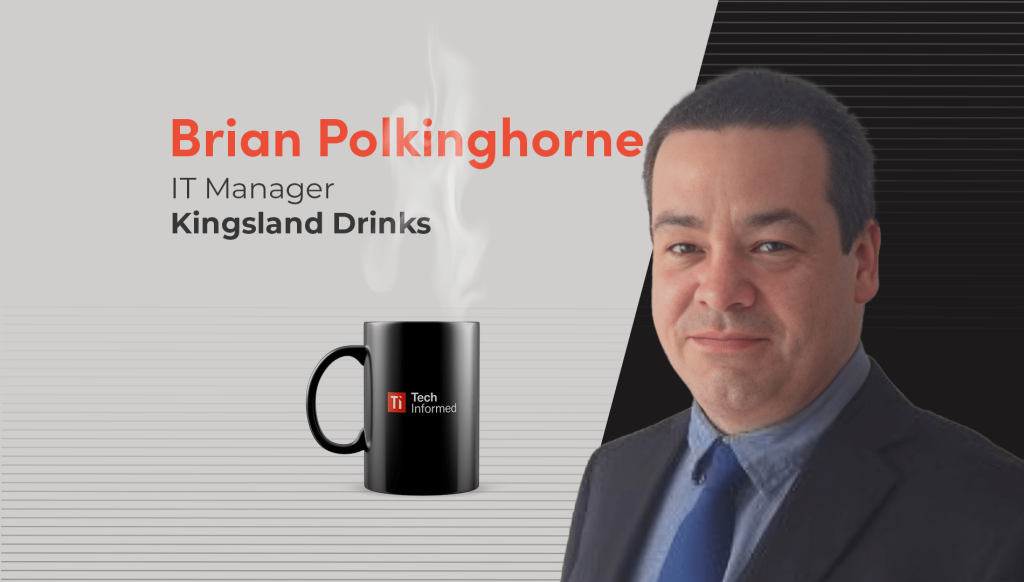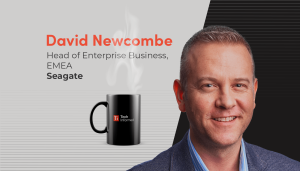

A coffee with… Brian Polkinghorne, IT Manager, Kingsland Drinks
Brian Polkinghorne’s passion with tech and engineering began with dismantling his parents' TV and repairing vintage trams. Now an experienced electrical engineer, Polkinghorne specialises in infrastructure refreshes. His career started with a cash-in-hand job building…
Brian Polkinghorne’s passion with tech and engineering began with dismantling his parents’ TV and repairing vintage trams. Now an experienced electrical engineer, Polkinghorne specialises in infrastructure refreshes.
His career started with a cash-in-hand job building PCs for small businesses, eventually progressing to roles at major firms like Centrica, where he oversaw data centre and network upgrades.
When Polkinghorne joined Kingsland Drinks — an independent contract packer, bottler, distributor, creator, and supplier of alcoholic beverages — he encountered a unique challenge.
The employee-owned business, home to around 480 staff, has been based in Manchester since 1995 on a distinctive hybrid indoor/outdoor brick factory and warehouse site dating back to 1895.
While the site’s industrial Victorian charm gives it character, it also brings connectivity headaches. Despite the convenience of wine shipments arriving via the nearby Manchester Ship Canal, the site’s infrastructure posed significant IT challenges.
As a 24/7 bottling production and HMRC-bonded warehousing operation, Kingsland relies heavily on its IT network to enable remote monitoring, management, and troubleshooting. Unfortunately, the factory’s 4ft thick walls — along with the sheer volume of fluids, cardboard, and fluctuating temperatures — created significant barriers for wireless connectivity.
Kingsland invited TI on site for a coffee — and perhaps a few samples in the wine tasting area — where Polkinghorne explained how implementing a Channel Blanket successfully resolved the plant’s connectivity issues.
Can you describe your operation, and the specific connectivity challenges you faced on site?
Our warehouse and production environment is highly dynamic, requiring constant monitoring and management of stock movement.
Forklift truck drivers rely on hand-held terminals to scan stock as they move it from location to location. However, our previous Wi-Fi system had significant coverage gaps, causing frequent signal drops.
Each time connectivity was lost, drivers had to leave their forklifts and manually input data at a nearby PC. This caused delays in booking stock, tracking movement, and dispatching goods, ultimately wasting considerable time and manpower.
Why was the solution a channel blanket?
I had an idea of what we needed but it was our managed service provider, Holker IT, that proposed the Allied Telesis Channel Blanket Solution to address these challenges.
A channel blanket uses multiple access points that operate as one unified system. Instead of relying on devices to switch between access points, the network itself manages connectivity.
This eliminates the common problem of disconnections when moving between access points on different channels. With this solution, our 128 access points all operate on a single channel and form one large wireless footprint.
This ensures reliable connectivity across the entire factory floor and the external loading bays, where truck movement can impact signal stability.
Now the drivers can do everything from the seat of their truck how much time and money has that saved you?
It’s saved at least a day a month for every driver. So, we’ve had this Blanket for 18 months now – that’s probably paid for the entire system! Ultimately it just means that you can get more done.
Is the Blanket Wi-Fi-6 powered?
We opted to continue using Wi-Fi 5 in the factory, as it efficiently handles our low-bandwidth data needs, ensuring reliable connectivity for our scanning devices.
We do use Wi-Fi 6 in our office spaces, where higher data speeds are more essential.
What new business processes can you now add to the channel blanket?
We have hand scanners but we’re looking at pushing people out there with tablets so they can load, because they couldn’t do that before.
We’re also looking at truck-mounted devices too – but we’re not looking at the Amazon driverless truck thing – I don’t think our site would be suitable for that.
So, no connected robots in your warehouses then?
They may work in the new bit but not the old bit – they’d be treading on too many people – it’s not the kind of site where that would be feasible. There may be more automation on the production lines. But that’s not our department!
Besides the channel blanket are there any other technologies that could solve your business operations?
Not really – unless you can get AI to start drinking more wine! I lived about a quarter of a mile away from Heaton Park, where the museum is based. When I was about 11 years old, I showed an interest, and they invited me to come down and join in. The first project I worked on was helping to restore a Blackpool tram car, bringing it back to operable condition and giving it a fresh coat of paint. When you’re that age, you can squeeze into spaces that adults can’t, so I could crawl into tricky spots and lend a hand. I’ve been involved ever since — for about 40 years now. Not exactly. I was also interested in computers as a kid — ZX Spectrum, Commodore 64, and all that. Ironically, I failed my computer studies at school and even got kicked out in my fourth year because I thought I knew more than the teacher! When it came time for college, I chose electronic engineering because my brother had studied it, and we both used to take TVs apart as kids — much to our parents’ dismay! My first job was building PCs for small businesses on a cash-in-hand basis. Back then, options were limited: you either built your own or bought an expensive Dell or IBM. Later, I joined the General Radio Company of America (GENRA), where they built hardware and software for car diagnostic systems. I worked in IT support there. A dongle for my car so that I can use Android Auto without having to plug my phone in. I’d say before that the coolest one was probably a Raspberry Pi – a little PC that you can just mess about and play with. Probably Pea-flavoured vodka. Just hot water with a spoon or two of coffee.
How did you get involved with the Manchester Transport Museum?
Did that experience lead you into IT and engineering?
What’s the last piece of tech you brought for your own personal use?
Working in a drinks factory, what’s the most unusual beverage you’ve tried?
How do you take your coffee?











